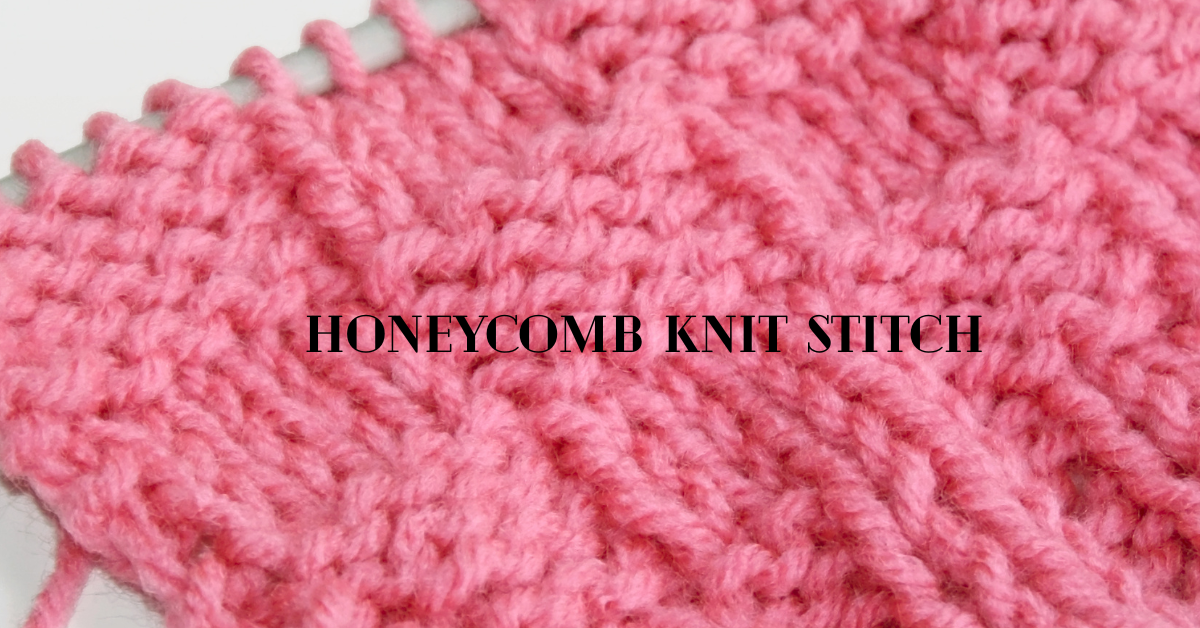The honeycomb knit stitch is a beautiful, textured pattern that resembles the hexagonal shapes of a beehive. It creates a three-dimensional effect that adds visual interest and depth to your fabric, making it perfect for scarves, blankets, pillows, and even garments. Though it looks intricate, the honeycomb knit stitch is surprisingly easy to master with just a few techniques.
What is the Honeycomb Knit Stitch?
The honeycomb knit stitch uses a combination of knit, purl, and slipped stitches to mimic the appearance of a honeycomb. The pattern creates a textured surface with raised areas and recessed sections that mimic a hexagonal grid. This stitch works well with both solid and variegated yarns and is reversible depending on the version you use.
Techniques You Need to Know
Before getting started, it’s helpful to be familiar with these basic knitting techniques
Knit stitch
Purl stitch
Slip stitch
Yarn in front (wyif) and yarn in back (wyib)
Some variations of the honeycomb stitch also use cable needles to create twisted stitches, although many honeycomb patterns do not require any cables at all.
Basic Honeycomb Stitch Pattern (Slip Stitch Method)
This version uses slipped stitches to form the honeycomb texture. It’s a great starting point and beginner-friendly.
Cast on a multiple of 4 stitches
Row 1 (Right Side): Knit 1, slip 1 wyib, knit 1, slip 1 wyib across the row
Row 2 (Wrong Side): Purl 1, slip 1 wyif, purl 1, slip 1 wyif across the row
Row 3: Slip 1 wyib, knit 1, slip 1 wyib, knit 1 across the row
Row 4: Slip 1 wyif, purl 1, slip 1 wyif, purl 1 across the row
Repeat Rows 1–4 to continue the pattern
As you knit more rows, you’ll begin to see the honeycomb effect emerge. The slipped stitches create the illusion of a hexagonal texture without needing cables or complex shaping.
Honeycomb with Mini Cables (Advanced Variation)
If you’re comfortable with cables, you can try a more advanced honeycomb stitch that includes small cable twists for a more dimensional and bold effect. This variation is often used in Aran knitting or in decorative panels on sweaters and accessories.
To knit this style
Use a multiple of 8 stitches
Work 2-over-2 cable twists every 4 rows
Alternate the direction of the twists every other repeat to create the honeycomb effect
Uses for Honeycomb Stitch
The honeycomb knit stitch is both attractive and practical. Some common uses include
Blankets and throws
Sweaters with textured panels
Scarves and cowls
Pillow covers
Baby items like blankets or hats
Because the texture adds thickness, honeycomb stitch provides extra warmth, making it ideal for cold-weather garments.
Tips for Knitting Honeycomb Stitch
Use a smooth, solid-colored yarn to highlight the texture
Keep your tension even, especially when slipping stitches
Block your finished piece to enhance the texture and even out the stitches
Practice the basic pattern on a swatch before starting a larger project
Yarn Choices
Wool and wool blends work well because they hold the shape of the stitch and provide warmth. Cotton yarns will make the texture more defined but less stretchy. Avoid fuzzy or highly textured yarns, as they may obscure the detail of the pattern.
Final Thoughts on the Honeycomb Knit Stitch
The honeycomb knit stitch is a versatile and eye-catching pattern that’s easier to knit than it looks. Whether you’re new to texture or want to enhance your skills, this stitch offers a rewarding way to add beauty and dimension to your knitwear. With just a few basic techniques, you can create something that looks impressively intricate and feels soft and cozy.

